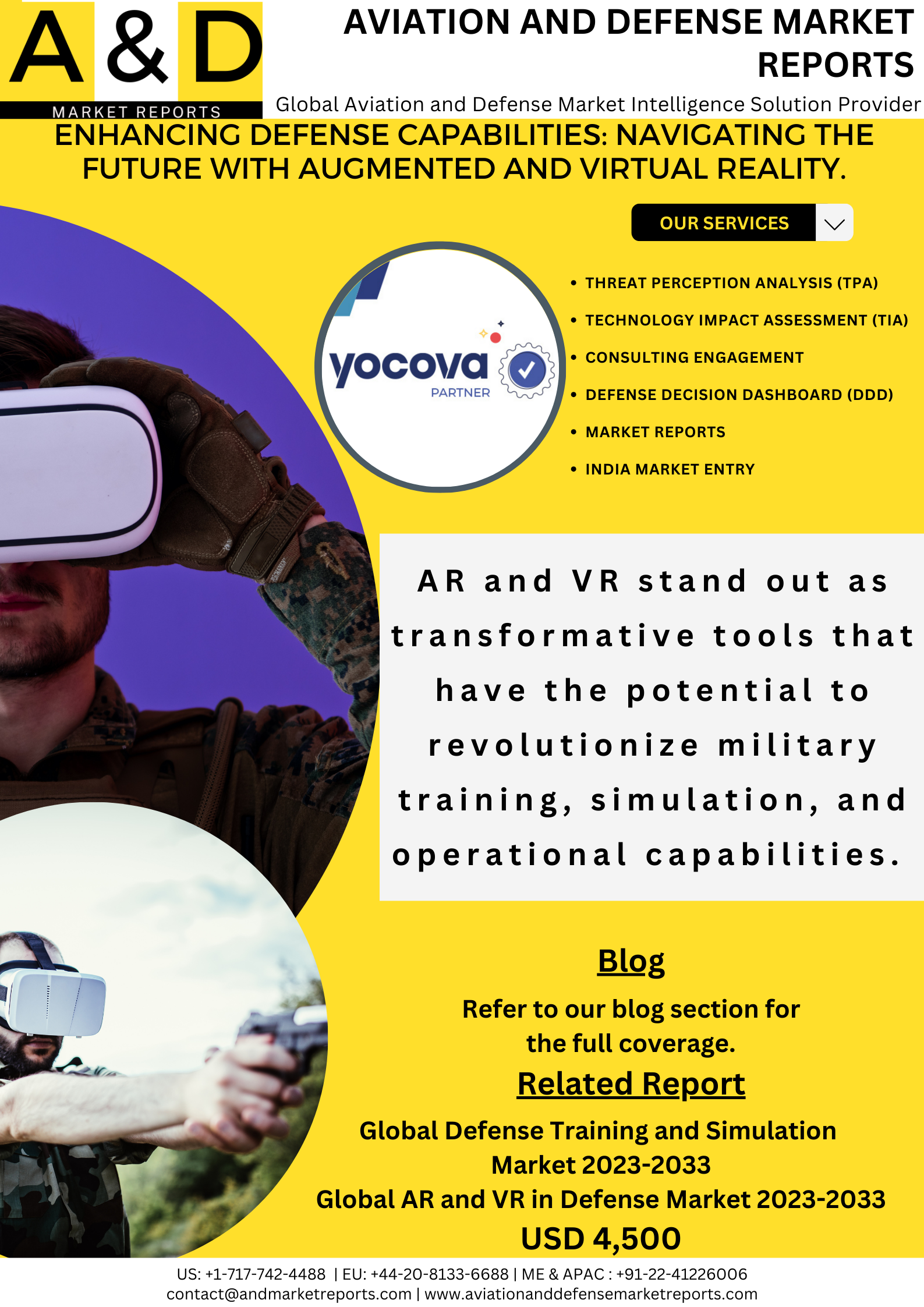The defense industry has made extensive use of augmented reality (AR) and virtual reality (VR) technologies, which improve training, simulation, operational planning, and maintenance procedures.
Military Training: To provide military personnel with realistic and immersive training environments, AR and VR are utilized. In a safe and controlled environment, soldiers can practice difficult maneuvers, participate in simulated combat scenarios, and hone their decision-making abilities.
Vehicle Simulation: Virtual reality is used to simulate how different military vehicles, such as ships, planes, and tanks, operate. This enables operators to become familiar with real equipment before handling it in a virtual setting.
Mission Planning: 3D models of the terrain, enemy locations, and other pertinent data are provided by AR and VR technologies, which help with mission planning. This aids in the decision-making process and helps military planners visualize the operational environment.
Tactical Decision Support: By superimposing up-to-date data onto soldiers’ field of vision, augmented reality (AR) systems can improve situational awareness while conducting operations. Maps, enemy positions, friendly troop locations, and other data may be included in this information.
Maintenance Training: AR helps maintainers repair and maintain sophisticated military equipment by giving them interactive overlays and guides. This can improve the effectiveness of maintenance operations and decrease downtime.
Remote Assistance: AR enables professionals to advise field workers in real-time. When performing repairs, maintenance technicians can use AR-capable devices to get virtual annotations or step-by-step instructions.
Virtual Command Centers: Despite their geographical dispersion, military leaders can work together and make decisions in a common digital space by utilizing virtual reality (VR) to create virtual command centers.
Prototype Testing: By helping to design and test new military vehicles and equipment before they are built, AR and VR technologies help save time and money.
ADVANCEMENTS
Headsets and HMDs (Head-Mounted Displays): The user experience has been enhanced by the development of lighter, more portable, and high-resolution headsets thanks to advancements in display technology.
Sensor Technology: Improved sensors help reduce motion sickness and enhance immersion. Examples of these sensors include accelerometers, gyroscopes, and positional tracking devices. They also improve tracking and responsiveness.
AI-driven Simulation: By combining machine learning (ML) and artificial intelligence (AI), simulations become more realistic and flexible. This makes training scenarios more dynamic and intelligent, which increases the difficulty and realism of simulations.
AI-Assisted Decision Support: During training and operations, military personnel can make well-informed decisions by using AI algorithms that analyze large amounts of data and provide real-time information.
Graphics and Rendering: The ability to train in situations that nearly mimic real-world operational conditions is made possible by advances in graphics rendering technology, which also creates more immersive and realistic virtual environments.
Simulation of Physics: Enhanced physics engines replicate authentic interactions in virtual settings, augmenting the authenticity of training simulations for manipulating weapons, operating vehicles, and other military duties.
AR Smart Glasses: As robust and lightweight AR smart glasses are developed, military personnel can maintain situational awareness while accessing augmented information in real time. On the battlefield, these gadgets are especially helpful for information overlay and heads-up displays.
Cloud Integration: Cloud computing makes it possible to offload storage and processing power, which makes it possible to run simulations that are more intricate and data-intensive. This makes group training exercises easier and gives users flexibility when accessing simulations from a different location
CHALLENGES
While virtual reality (VR) and augmented reality (AR) technologies have many advantages in the defense industry, several issues must be resolved before they can be widely used and effectively implemented.
High Initial Investment: The creation and implementation of cutting-edge AR and VR systems can be costly, encompassing expenses for hardware, software, and military personnel’s specialized training.
Restricted Field of View (FOV): The limited field of view of many augmented reality and virtual reality devices may make it more difficult for users to get a clear picture of the virtual or augmented world.
Resolution and Graphics: It can be difficult to produce realistic simulations and high-resolution graphics, particularly in situations where precise visual information is essential.
Compatibility issues: It can be difficult and necessitate considerable modifications to integrate AR and VR technologies with current military systems, equipment, and communication networks.
Motion Sickness: When using VR systems, some people may feel uncomfortable or suffer from motion sickness, especially if they use them for an extended period or in situations where there are fast movements.
Haptic Feedback: The user’s capacity to engage with virtual objects in a manner that replicates real-world experiences may be impacted by the present limitations in offering realistic haptic feedback (sense of touch).
Outdoor Use: Since many AR and VR systems are designed with indoor use in mind, they might not perform as well or accurately in outdoor settings with different lighting conditions.
Physical Space Requirements: In confined spaces, the requirement for physical space to support immersive features such as motion tracking may pose a challenge.
For AR and VR technologies to be successfully incorporated into defense applications, these issues must be resolved. The goal of ongoing research and development is to get past these barriers so that immersive technologies can be fully utilized in military operations.
